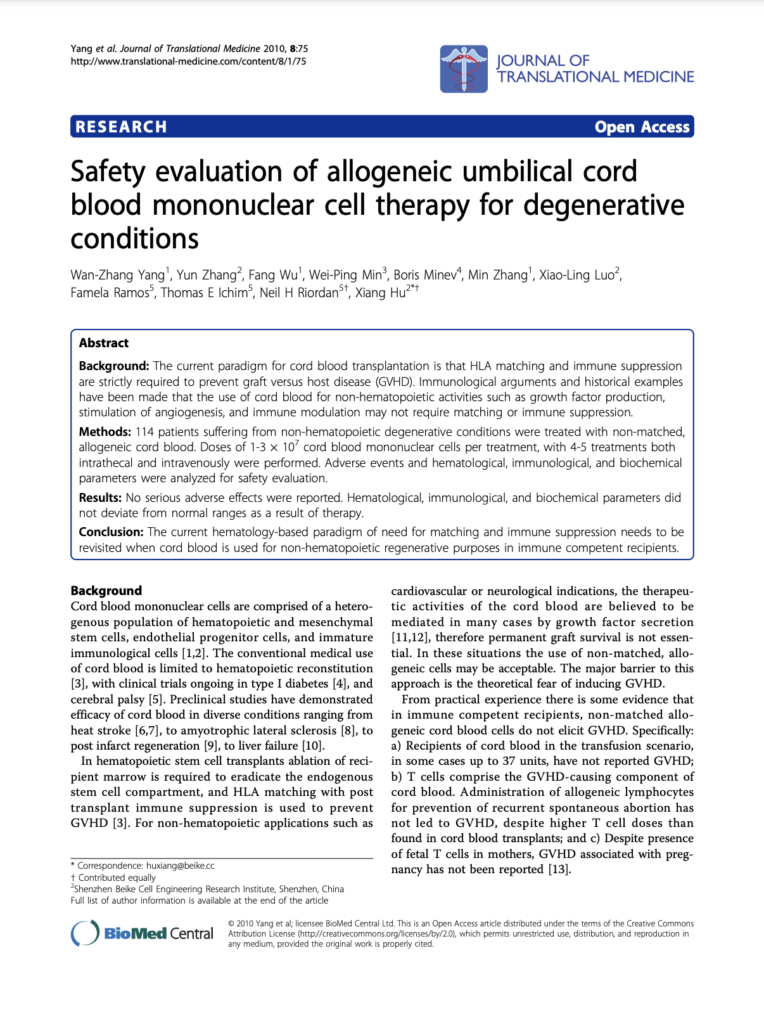August 2010
Safety evaluation of allogeneic umbilical cord blood mononuclear cell therapy for degenerative conditions.
Journal Citation
J Transl Med. 2010 Aug 3;8:75
Authors
Yang WZ, Zhang Y, Wu F, Min WP, Minev B, Zhang M, Luo XL, Ramos F, Ichim TE, Riordan NH, Hu X.
Abstract
Background: The current paradigm for cord blood transplantation is that HLA matching and immune suppression are strictly required to prevent graft versus host disease (GVHD). Immunological arguments and historical examples have been made that the use of cord blood for non-hematopoietic activities such as growth factor production, stimulation of angiogenesis, and immune modulation may not require matching or immune suppression. Methods: 114 patients suffering from non-hematopoietic degenerative conditions were treated with non-matched, allogeneic cord blood. Doses of 1-3 x 10(7) cord blood mononuclear cells per treatment, with 4-5 treatments both intrathecal and intravenously were performed. Adverse events and hematological, immunological, and biochemical parameters were analyzed for safety evaluation. Results: No serious adverse effects were reported. Hematological, immunological, and biochemical parameters did not deviate from normal ranges as a result of therapy. Conclusion: The current hematology-based paradigm of need for matching and immune suppression needs to be revisited when cord blood is used for non-hematopoietic regenerative purposes in immune competent recipients.

